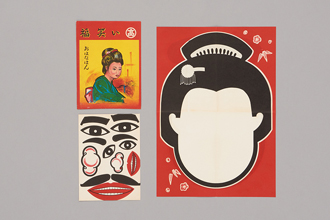Toys Expo-Children in Modern Japan|Exhibition Guide

Relations between toys, epochs, and culture are represented by symbolic images.
Toys of the Edo Era are introduced. They are related to history and culture across Japan. They differ markedly from toys after the Meiji Era. Old-time toys represent a celebration of the birth of a child, wishes for the sound growth of the child, and the status of children at that time.
After the Meiji Era, society and toys changed greatly because of institutional streamlining by the government, including that of the educational system throughout Japan, and because of the introduction of new knowledge and technology from overseas. Relations between toys, education of children, and games from Meiji through the first half of Showa are introduced.
During implementation of national modernization policies aimed at establishing a prosperous country and a strong army, toys suggesting an army with modern equipment and weapons emerged. These toys strongly influenced children’s games such as playing solders, although the children’s world of playing with a free and rich imagination was lost.
Along with societal changes that came after defeat in the war, with the widening of democracy and high economic growth, toys representing characters from television programs and those based on new industrial arts, science, and technology appeared. Relations of toys reflecting such a social situation were introduced along with fashion with children’s games.
No toy is exhibited in this space. Please write your expectations and desires for the future on the message card or message board. Adults and children can think together to form a future image and social images as a scene that you can hope for or predict from the relation between games and toys for children.
 |
 |





